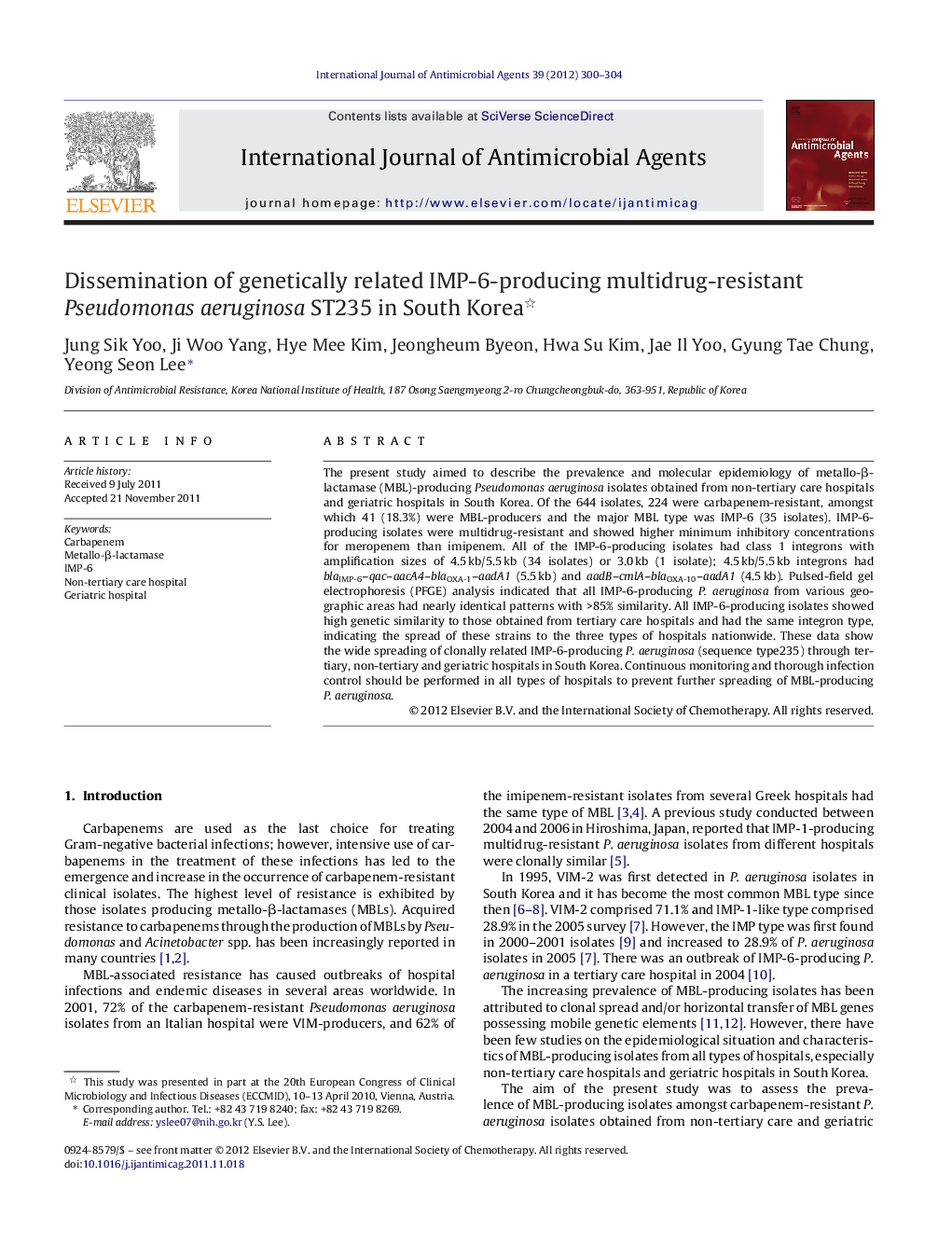| Article ID | Journal | Published Year | Pages | File Type |
|---|---|---|---|---|
| 6118316 | International Journal of Antimicrobial Agents | 2012 | 5 Pages |
The present study aimed to describe the prevalence and molecular epidemiology of metallo-β-lactamase (MBL)-producing Pseudomonas aeruginosa isolates obtained from non-tertiary care hospitals and geriatric hospitals in South Korea. Of the 644 isolates, 224 were carbapenem-resistant, amongst which 41 (18.3%) were MBL-producers and the major MBL type was IMP-6 (35 isolates). IMP-6-producing isolates were multidrug-resistant and showed higher minimum inhibitory concentrations for meropenem than imipenem. All of the IMP-6-producing isolates had class 1 integrons with amplification sizes of 4.5 kb/5.5 kb (34 isolates) or 3.0 kb (1 isolate); 4.5 kb/5.5 kb integrons had blaIMP-6-qac-aacA4-blaOXA-1-aadA1 (5.5 kb) and aadB-cmlA-blaOXA-10-aadA1 (4.5 kb). Pulsed-field gel electrophoresis (PFGE) analysis indicated that all IMP-6-producing P. aeruginosa from various geographic areas had nearly identical patterns with >85% similarity. All IMP-6-producing isolates showed high genetic similarity to those obtained from tertiary care hospitals and had the same integron type, indicating the spread of these strains to the three types of hospitals nationwide. These data show the wide spreading of clonally related IMP-6-producing P. aeruginosa (sequence type235) through tertiary, non-tertiary and geriatric hospitals in South Korea. Continuous monitoring and thorough infection control should be performed in all types of hospitals to prevent further spreading of MBL-producing P. aeruginosa.
